Qianghuo
[Medicinal Use] This product is the rhizome and root of the Umbelliferae plant Qianghuo
[Nature and flavor and meridians] Pungent, bitter, warm. Enters the bladder and kidney meridians.
[Effects] Dispel wind and relieve exterior symptoms, dispel rheumatism, and relieve pain.
[Clinical Application] 1. Used for colds, fever, chills, etc. Qianghuo has the function of dispersing wind and cold, dispelling wind and relieving pain. It is used for colds, headaches, and body pains. It is often used with Fangfeng, Baizhi and other medicines.
2. Used for rheumatic pain, headaches, etc. Qianghuo has a very significant effect in dispelling rheumatism. It is a commonly used product for dispelling wind and dampness. However, it is generally believed that this product is suitable for those with rheumatic pain in more than half of the body. For example, if the body is painful, it can be used with Fangfeng, Duhuo, etc. For headaches, it is often used with Chuanxiong, Asarum, etc.
[Prescription Name] Qianghuo, Chuanqianghuo (wash, dry, slice)
[General Dosage and Usage] One to three coins, decocted. 【Comment】 Qianghuo can not only induce sweating and relieve the symptoms, but also dispel wind and relieve pain. However, when used as a sweating and relieving medicine, its wind-dispelling and pain-relieving effects should be closely combined. That is, when it is used clinically for wind-cold symptoms, it must be used with headaches or joint pain. As for the treatment of rheumatic pain, it can be used regardless of whether there are symptoms. According to the experience of clinical practice in recent years, this product has a good effect in reducing fever. It can be used in combination with heat-clearing drugs such as dandelion and isatis root to treat wind-heat symptoms, and generally there is no fever again after the fever subsides. However, this product has a strong smell and excessive use can easily cause vomiting. Therefore, when using it, you must pay attention to the patient’s stomach condition and master the appropriate dosage.
【Example of prescription】Nine-flavor Qianghuo Decoction (《This matter is difficult to know》) Qianghuo, Fangfeng, Baizhi, Shengdi, Cangzhu, Huangqin, Xixin, Gancao, Chuanxiong. Treat exogenous wind-cold-dampness evil, fever and chills, no sweat on the skin, headache and stiff neck, soreness and pain in limbs.
Qiang Bo Pu Bo Tang (proven prescription) Qiang Huo, burdock seeds, dandelion, mint leaves. Treats exogenous wind-heat, such as influenza, upper respiratory tract infection, tonsillitis, mumps, etc.
[Literature excerpt] “Yao Xing Ben Cao”: “Treats wind-induced aphonia, itching, paralysis of hands and feet, mouth and eye paralysis, body sores, blood leprosy.”
“Yao Yao Fa Xiang”: “Treats wind-cold-dampness arthralgia, soreness and numbness, dizziness, and neck difficulty.”
This product is the Umbelliferae plant Qiang Huo Notopterygium incisum Ting season excavation, remove the fibrous roots and mud, and dry it.
ex H.T.Chang or wide-leaved Qiang Huo Notopterygium franchetii H.de Boiss. Dried rhizomes and roots. Spring, Autumn
[Properties] Qiang Huo is a cylindrical slightly curved rhizome, 4~13cm long, 0.6~2.5cm in diameter, with a stem scar at the top. The surface is brown to dark brown, and the outer skin is yellow where it falls off. The internodes are shortened and tightly raised in a ring, resembling a silkworm, commonly known as “silkworm Qiang”: the internodes are extended and shaped like bamboo nodes, commonly known as “bamboo-node Qiang”. There are many root marks and brown broken scales with dot-like or tumor-like protrusions on the nodes. The body is light, brittle, easy to break, the cross section is uneven, with many cracks, the cortex is yellow-brown to dark brown, oily, with brown oil spots, the wood is yellow-white, the rays are obvious, and the pith is yellow to yellow-brown. The smell is fragrant, and the taste is slightly bitter and spicy.
Broad-leaved Qianghuo is a rhizome and root. The rhizome is cylindrical, with stem and leaf sheath residues at the top, and the root is conical, with longitudinal wrinkles and lenticels; the surface is brown, with dense rings near the rhizome, 8~15cm long, 1~3cm in diameter, commonly known as “strip Qiang”. Some rhizomes are thick, irregularly nodular, with several stem bases on the top and thin roots, commonly known as “big-headed Qiang”. The texture is brittle, easy to break, the cross section is slightly flat, the bark is light brown and the wood is yellow-white. The smell is light.
[Nhận dạng]
Take 1g of the powder of this product, add 5ml of methanol, ultrasonically treat for 20 minutes, let it stand, and take the supernatant as the test solution. Take another purple flower peucedanum reference substance, add methanol to make a solution containing 0.5mg per 1ml, as the reference solution. According to the thin layer chromatography method (General Rule 0502), take 2~4 of the above two solutions, respectively, and spot them on the same silica gel G thin layer plate prepared with 3% sodium acetate solution, use chloroform-methanol (8:2) as the developing agent, develop, take out, dry, and examine under ultraviolet light (365nm). In the chromatogram of the test product, the same blue fluorescent spots appear at the corresponding positions of the chromatogram of the reference substance.
【Điều tra】
Tổng hàm lượng tro không được vượt quá 8,0% (Quy định chung 2302).
Acid insoluble ash content shall not exceed 3.0% (General Rule 2302).
【Characteristic spectrum】
Determined according to high performance liquid chromatography (General Rule 0512)
Chromatographic conditions and system suitability test Use octadecylsilane bonded silica gel (non-hydrophilic) as filler (column length is 250mm, inner diameter is 4.6mm, particle size is 5um); acetonitrile is used as mobile phase
A, 0.1% phosphoric acid solution is used as mobile phase B, and gradient elution is performed according to the provisions in the following table; the temperature is 25℃; the detection wavelength is 246nm. The number of theoretical plates calculated based on the Notopterygium root alcohol peak should not be less than 18000.
Preparation of control extract solution Take 10mg of Notopterygium root control extract, accurately weigh it, place it in a 5ml volumetric flask, add methanol to dissolve and dilute to the scale, shake well, and obtain.
Preparation of test solution Take the test solution under [Content determination] and obtain. Determination method: accurately take 10u of the control extract solution and the test solution, inject them into the liquid chromatograph, determine, and record the chromatogram.
The characteristic spectrum of the test sample should show chromatographic peaks corresponding to the retention time of the four main characteristic peaks in the control extract.
[Trích đoạn]
According to the hot leaching method under the determination method of alcohol-soluble extract (General Rule 2201), ethanol is used as the solvent, and the content shall not be less than 15.0%.
[Xác định nội dung]
Volatile oil is determined according to the determination method of volatile oil (General Rule 2204)
This product contains not less than 1.4% (ml/g) of volatile oil.
Notopterygium alcohol and isoimperatorin are determined according to high performance liquid chromatography (General Rule 0512)
Chromatographic conditions and system suitability test: Octadecyl brickane bonded tridacnatide as filler; acetonitrile-water (44:56) as mobile phase; detection wavelength is 310nm. The number of theoretical plates calculated based on the notopterygium alcohol peak should not be less than 5000.
Preparation of reference solution Take appropriate amount of notopterygium alcohol reference and isoimperatorin reference, weigh accurately, add methanol to make a mixed solution containing 60ug notopterygium alcohol and 30ug isoimperatorin per 1ml, and obtain. Preparation of test solution Take about 0.4g of this product powder (passed through No. 3 sieve), weigh accurately, put it in a stoppered conical bottle, accurately add 50ml of methanol, weigh the weight, ultrasonically treat (power 250W, frequency 50kHz) for 30 minutes, cool, weigh again, make up the lost weight with methanol, shake, filter, and take the filtrate, and obtain. Determination method Accurately aspirate 5μl of reference solution and 5~10u of test solution, inject into liquid chromatograph, and determine, and obtain. Calculated on the basis of dry product, the total amount of notopterygium alcohol (C21H220s) and isoimperatorin (C16H1404) contained in this product shall not be less than 0.40%.
Mảnh thuốc
[Xử lý]
Remove impurities, wash, moisten, cut into thick slices, and dry.
[Của cải]
This product is in the form of circular or irregular cross-section or oblique slices, with brown to dark brown epidermis, brown outer surface of the cut surface, yellow-white wood, and some with visible radial textures. Lightweight, crisp. Fragrant, slightly bitter and pungent.
[Điều tra]
The moisture content shall not exceed 9.0% (General Rule 0832, Method 4).
[Nhận dạng][Kiểm tra]
(Total ash, acid-insoluble ash)
[Characteristic spectrum][Extract][Content determination]
Same as medicinal materials.
[Thiên nhiên và hương vị và kinh lạc]
Pungent, bitter, warm. Enters the bladder and kidney meridians,
[Chức năng và chỉ định]
Relieves cold, dispels wind and dampness, and relieves pain. Used for colds caused by wind and cold, headaches and stiff necks, rheumatic pain, and shoulder and back pain.
[Cách dùng và liều dùng]
3~10g.
[Kho]
Bảo quản ở nơi khô ráo, thoáng mát để tránh sâu bướm.
Where is the main production area of Notopterygium incisum Ting ex H.T.Chang or Notopterygium francheti H.
de Boiss. of the Umbelliferae family. It is harvested in spring and autumn, and the fibrous roots and mud are removed and dried.
Characteristics of the medicinal parts of Notopterygium:
· Notopterygium is a cylindrical, slightly curved rhizome, 4-13cm long, 0.6-2.5cm in diameter, with a stem scar at the top. The surface is brown to dark brown, and the outer skin is yellow where it falls off. The internodes are shortened, forming a tightly raised ring, resembling a silkworm, commonly known as “silkworm qiang”; the internodes are extended, shaped like bamboo nodes, commonly known as “bamboo node qiang”.
There are many dot-shaped or tumor-like root scars and brown broken scales on the nodes. It is light, brittle, easy to break, with uneven cross section and many cracks. The bark is yellow-brown to dark brown, oily, with brown oil spots, the wood is yellow-white, with obvious rays, and the pith is yellow to yellow-brown. It has a fragrant smell and tastes slightly bitter and spicy.
Broad-leaved Notopterygium is a rhizome and root. The rhizome is cylindrical, with stem and leaf sheath residues at the top, and the root is conical, with longitudinal wrinkles and lenticels; the surface is brown. There are dense rings near the rhizome, 8~15cm long, 1~3cm in diameter, commonly known as “striped qiang”. Some rhizomes are thick, irregularly nodular, with several stem bases at the top, and the roots are thinner, commonly known as “big-headed qiang”. It is crispy, easy to break, with a slightly flat cross section, light brown bark, and yellow-white wood. The smell is light.
How are the ancient books on the history of the disease recorded? “Compendium of Materia Medica”: “It can treat wind, aphonia, itching, blood leprosy, paralysis of hands and feet, crooked mouth and face, and stubborn numbness all over the body. “Rihuazi Materia Medica”: “It can treat all wind and qi, muscle and bone cramps, weak limbs, dizziness, red and painful eyes, and water vapor in the back of the head, damage to the five labors, cold and sore joints, and clear the five internal organs.
“Zhenzhu Nang”: It can treat “sun meridian headache, relieve pain in various joints, and warm the gallbladder.
“Medical Origin·Medicine Classification”: “The Secret of Main Treatments” says: It has five uses. One is to guide the meridians of the hands and feet sun. Two is rheumatism. Three is to relieve pain in the joints. Four is to remove carbuncle and blood. Five is rheumatism headache.
“Ben Jing Feng Yuan”: “Qiang Huo is the commander of the chaos, … wind can overcome dampness, so Qiang Huo can treat water dampness.
Các hiệu ứng
Qiang Huo has the effects of dispelling cold, dispelling wind and dampness, and relieving pain.
What are the main effects and clinical applications of Qiang Huo?
Qiang Huo is used for colds, headaches and stiff necks, rheumatic pain, and shoulder and back pain.
Hội chứng phong hàn và ẩm thấp
Symptoms include aversion to cold and fever, no sweat, headaches and stiff necks, limb pain, etc. It is often used with Fangfeng, Asarum, Chuanxiong, etc.
Bi syndrome
Treats wind-cold-dampness arthralgia, symptoms include shoulder, neck and arm pain, difficulty in movement, numbness of hands and feet, etc., and is often used with Fangfeng, Turmeric, Angelica, etc.
What other effects does Qiang Huo have?
The commonly used medicinal diet recipes of Qiang Huo are as follows
Joint pain, tendon and vein spasm; or hemiplegia due to stroke, paralysis of the mouth, eyes and mouth, and numbness of limbs:
1 white flower snake, 60g Qiang Huo, 60g Angelica root g, 60g of Gastrodia elata, 60g of Gentiana macrophylla, 60g of Acanthopanax cortex, 30g of Saposhnikovia divaricata, and 4L of glutinous rice wine. . · Wash and moisten the white flower snake with wine, remove the bone spurs, and take the meat; chop each medicine, put it in a silk bag, and put it in a wine jar; put the wine jar in a large pot, boil it for 1 day, take it out and bury it in the shade, and take it out after 7 days. Drink 1~2 cups (30~60mL) each time.
Rheumatic shoulder and back pain:
80g of turmeric, 160g of papaya, 80g of Notopterygium incisum, 1L of yellow wine, seal it for 7 days. Drink 10mL 3 times a day. Note: The use of Chinese medicinal materials must be based on syndrome differentiation and treatment, and should be used under the guidance of professional Chinese medicine practitioners. Do not use them at will, and do not listen to Chinese medicine prescriptions and advertisements at will.
What are the compound preparations containing Notopterygium incisum?
Nine-flavored Notopterygium incisum soup
Sweating and dampness removal, and clearing internal heat. Indications: Exogenous wind, cold and dampness, There is a syndrome of internal heat accumulation. Chills and fever, no sweat, headache and stiff neck, soreness and pain in limbs, bitter mouth and slight thirst, white or slightly yellow tongue coating, and floating pulse.
Qubi Decoction
Replenishes qi and nourishes the body, dispels wind and overcomes dampness. Indications: syndrome of wind, cold and dampness blocking the meridians. Shoulder, neck and arm pain, difficulty in moving, numbness of hands and feet, etc.
Jiuwei Qianghuo Pills/Granules/Oral Liquid
Disperses wind and relieves the exterior, dispels cold and removes dampness. Used for colds caused by exogenous wind, cold and dampness, with symptoms of chills, fever, no sweat, heavy and painful head, and sore limbs.
Chuanxiong Cha Tiao San
Disperses wind and relieves pain. Used for headaches caused by exogenous wind evil, or with chills, fever, and nasal congestion. Shujin Pills
Dispel wind and dampness, relax muscles and activate blood circulation. Used for wind, cold and dampness, numbness of limbs, pain in muscles and bones, and difficulty in walking. Qingwen Jiedu Pills
Clears and detoxifies. Used for exogenous epidemics, chills and high fever, headache and no sweat, thirst and dry throat, cheeks, and big head plague.
About Modern research progress of Qianghuo
This product has multiple pharmacological effects such as antipyretic, anti-inflammatory, analgesic, antiarrhythmic, anticoagulant, and anti-pathogenic microorganisms.
Phương pháp sử dụng
Qianghuo has the effects of dispelling cold, dispelling wind and dampness, and relieving pain. Generally, Qianghuo decoction pieces are used for decoction. Please follow the doctor’s advice for specific medication.
How to use Qianghuo correctly?
When Qianghuo decoction is taken orally, the common dosage is 3~10g.
After different processing methods, Chinese medicinal materials such as Qianghuo and wine Qianghuo can be produced. Different processing methods have different effects, but the medication method is the same. Please follow the doctor’s advice for specific medication.
Qianghuo is generally used in decoctions, decoctions are taken, and powders or pills can also be made for consumption. However, the use of Chinese medicinal materials must be differentiated and treated, and should be used under the guidance of professional Chinese medicine practitioners. They should not be used at will, and they should not be used at will, let alone listen to Chinese medicine prescriptions and advertisements.
In addition, Qianghuo can also be soaked in wine, and soaked in wine with Fangfeng and black beans, which has the effect of dispelling wind and relieving pain.
How to prepare Qianghuo?
· Qianghuo: Take the original medicinal material, remove impurities, wash it with water, moisten it thoroughly, cut it into thick slices, and dry it in the sun or at low temperature
Wine Qianghuo: Take clean Qianghuo slices and add yellow wine to mix well, soak until the wine is absorbed, put it in a pot and heat it with a slow fire, stir-fry it dry, take it out, and let it cool. For every 100kg of Qianghuo, use 20kg of yellow wine.
What drugs should be used with Qianghuo at the same time with special attention?
The combined use of Chinese medicine and the combined use of Chinese and Western medicine requires syndrome differentiation and clinical individualized treatment. If you are using other drugs, please consult a doctor before taking the medicine, and inform the doctor of all your diagnosed diseases and treatment plans you are receiving
Hướng dẫn sử dụng
Qianghuo has a strong smell, and excessive use can easily cause vomiting, so it is not suitable for people with weak spleen and stomach; it is pungent, warm, dry and strong, which hurts yin and consumes blood, so people with blood deficiency and pain and yin deficiency headache should be cautious when taking it.
What precautions should be taken when using Qianghuo?
· People with yin deficiency and blood deficiency and qi deficiency and sweating should be cautious when taking it.
Excessive dosage can easily cause vomiting, and it is not suitable for people with weak spleen and stomach. .
Pregnant women should not take it for a long time.
This product has a fragrant smell and a slightly bitter and spicy taste. The ones with brown skin, many oil spots on the cut surface, and strong smell are the best. Use it raw.
How to identify and use Qianghuo?
Differentiated with Duhuo
Qianghuo and Duhuo can both dispel rheumatism, relieve pain, and relieve the symptoms of wind-cold dampness, wind-cold dampness and superficial symptoms, and headaches. .However, Qianghuo is more dry and has a strong dispersing power. It is often used for wind-cold dampness and pain in the upper body; Duhuo is more mild and has a weaker dispersing power. It is often used for wind-cold dampness and pain in the lower body. If there is wind-cold dampness and pain all over the body, the two are often used in combination.
Mẹo dùng thuốc
Những câu hỏi thường gặp nhất của bệnh nhân
The efficacy and function of Jiuwei Qianghuo Pills
Jiuwei Qianghuo Pills are composed of Qianghuo, Fangfeng, Atractylodes, Asarum, Chuanxiong, Angelica dahurica, Scutellaria baicalensis, Licorice, and Rehmannia glutinosa. This product has the effects of dispelling wind and relieving exterior symptoms, dispelling cold and removing dampness.
It is mainly used for colds caused by exogenous wind, cold and dampness, with symptoms of aversion to cold, fever, no sweating, heavy and painful head, and sore limbs. It can also be used to treat upper respiratory tract infections and rheumatoid arthritis.
The effects of Qianghuo Shengshi Decoction Qianghuo Shengshi Decoction is a dehumidifying agent, composed of Qianghuo, Duhuo, Ligusticum chuanxiong, Ligusticum chuanxiong, etc. It has the effects of dispelling wind, removing dampness, and relieving pain.
It is mainly used to treat rheumatism in the exterior. Shoulder and back pain cannot be looked back, headache and heaviness, or waist and spine pain,Difficult to turn, white tongue coating, floating pulse.
It is clinically used to treat rheumatoid arthritis, rheumatoid arthritis, osteoarthritis, ankylosing spondylitis and other rheumatism on the surface.
Qiang Huo – Notopterygium
Khoảng giá: từ $88.88 đến $49,880.00
+ Miễn phí vận chuyểnQiang huo – Notopterygium,notopterygium root,Ntopterygii Rhizoma Et Radix,Notopterygium Root,Radix Notopterygii,Notopterygium Rhizome and Root,qiang huo herb,qiang huo tcm, [qiang huo], Chinese herbal medicine, alias: Sichuan Qiang, big head Qiang, silkworm Qiang, bamboo joint Qiang, English name: Ntopterygii Rhizoma Et Radix Main effects: dispel cold, dispel wind and dampness, relieve pain.
Chinese herbal medicine Qianghuo is a herbal medicine for dispelling cold, dispelling wind and dampness, and relieving pain.
Qianghuo is a herbal medicine for dispelling cold, dispelling wind and dampness, and relieving pain.
Qianghuo is pungent, bitter, and warm. It enters the bladder and kidney meridians.
Qianghuo is pungent, dispersing, bitter, and dry, warming, ascending, and has a strong and strong qi. It mainly enters the bladder meridian and the kidney meridian. It mainly treats the surface and the upper part, dispersing the wandering wind and cold and dampness on the surface and relieving pain in the joints. It has a strong effect and is good at treating headaches of the solar meridian (pain in the back of the head) and neck pain, especially pain in the shoulders, back, and limbs. Qianghuo began to be used mixed with Duhuo in the Han Dynasty. The two were not listed separately in the Tang Dynasty’s “Compendium of Materia Medica”.
This product mainly contains volatile oils: α-thujacene, α-pinene, β-pinene, etc.; coumarins: purpurogenol, chamomile alcohol, isoimperatorin, 8-methylisoimperatorin; phenolic components: zanthoxylum toxicol. It also contains fatty acids, amino acids, sugars, etc. It has the effects of dispelling cold, expelling wind and dampness, and relieving pain.Qianghuo, [qiang huo], Chinese herbal medicine, alias: Sichuan Qiang, big head Qiang, silkworm Qiang, bamboo joint Qiang, English name: Ntopterygii Rhizoma Et Radix Main effects: dispel cold, dispel wind and dampness, relieve pain.
Chinese herbal medicine Qianghuo is a herbal medicine for dispelling cold, dispelling wind and dampness, and relieving pain.
Qianghuo is a herbal medicine for dispelling cold, dispelling wind and dampness, and relieving pain.
Qianghuo is pungent, bitter, and warm. It enters the bladder and kidney meridians.
Qianghuo is pungent, dispersing, bitter, and dry, warming, ascending, and has a strong and strong qi. It mainly enters the bladder meridian and the kidney meridian. It mainly treats the surface and the upper part, dispersing the wandering wind and cold and dampness on the surface and relieving pain in the joints. It has a strong effect and is good at treating headaches of the solar meridian (pain in the back of the head) and neck pain, especially pain in the shoulders, back, and limbs. Qianghuo began to be used mixed with Duhuo in the Han Dynasty. The two were not listed separately in the Tang Dynasty’s “Compendium of Materia Medica”.
This product mainly contains volatile oils: α-thujacene, α-pinene, β-pinene, etc.; coumarins: purpurogenol, chamomile alcohol, isoimperatorin, 8-methylisoimperatorin; phenolic components: zanthoxylum toxicol. It also contains fatty acids, amino acids, sugars, etc. It has the effects of dispelling cold, expelling wind and dampness, and relieving pain.
| Cân nặng | 1kg, 10kg, 100kg, 500kg, 1000kg |
|---|










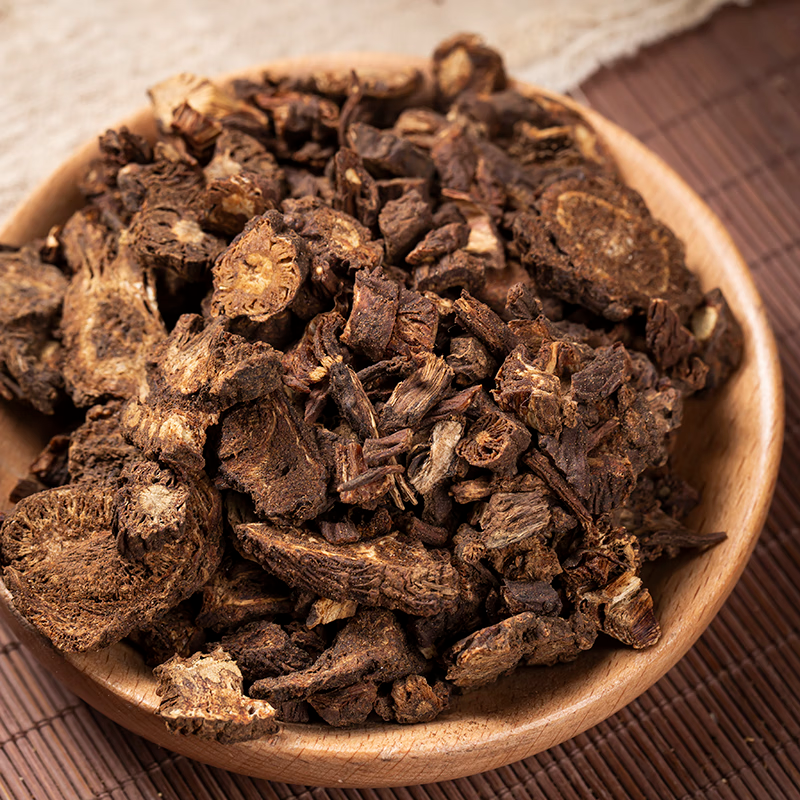

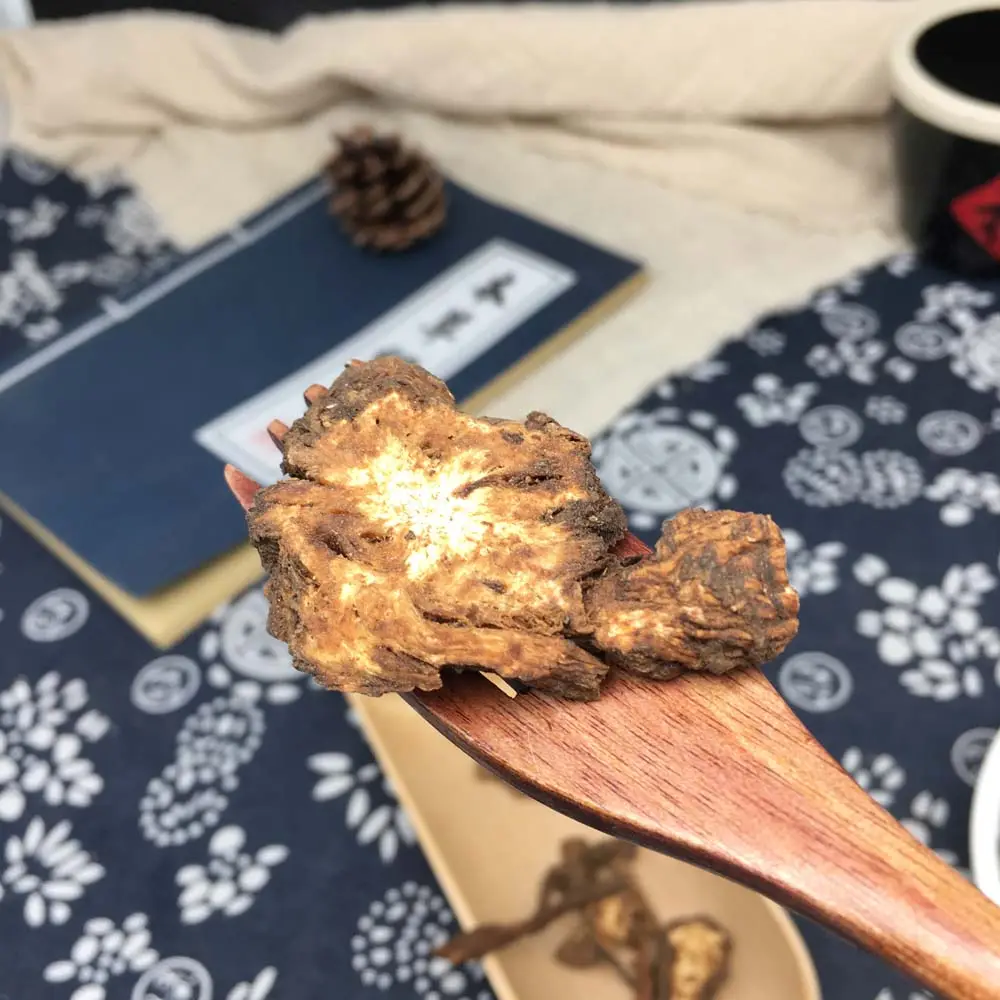
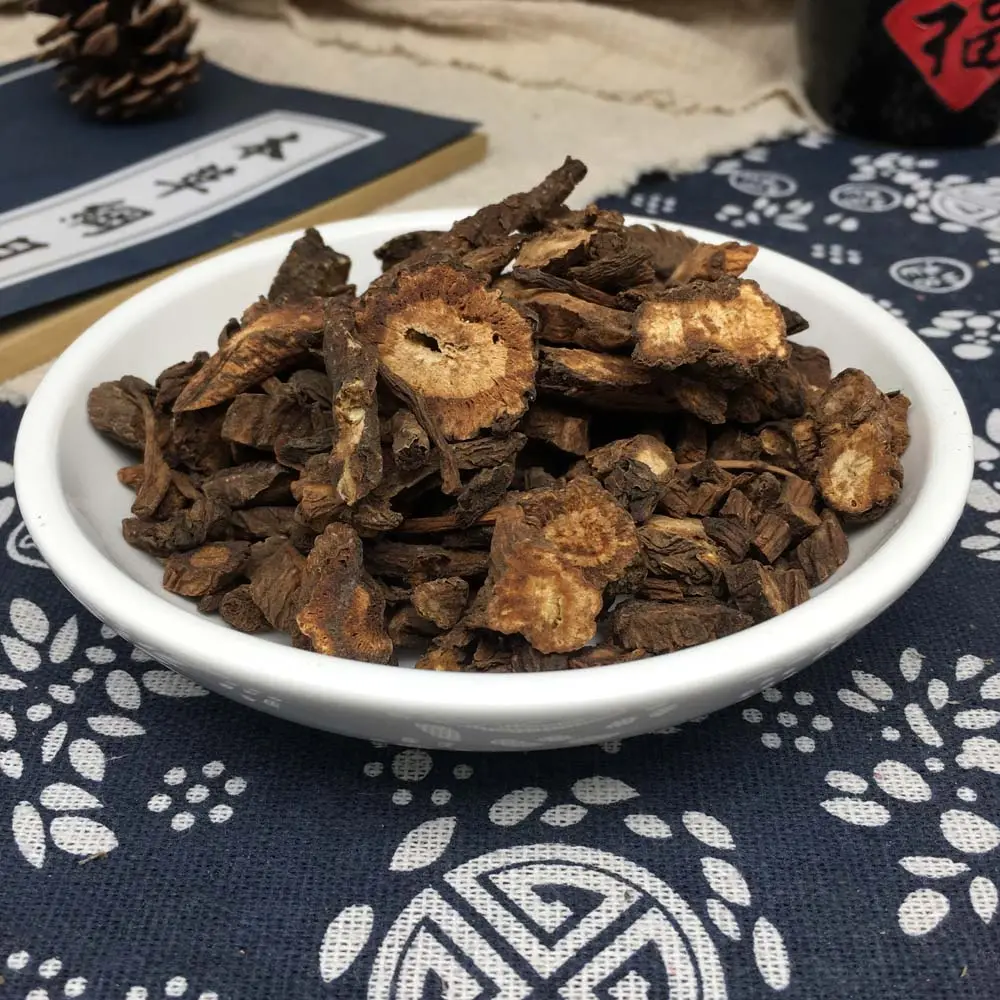


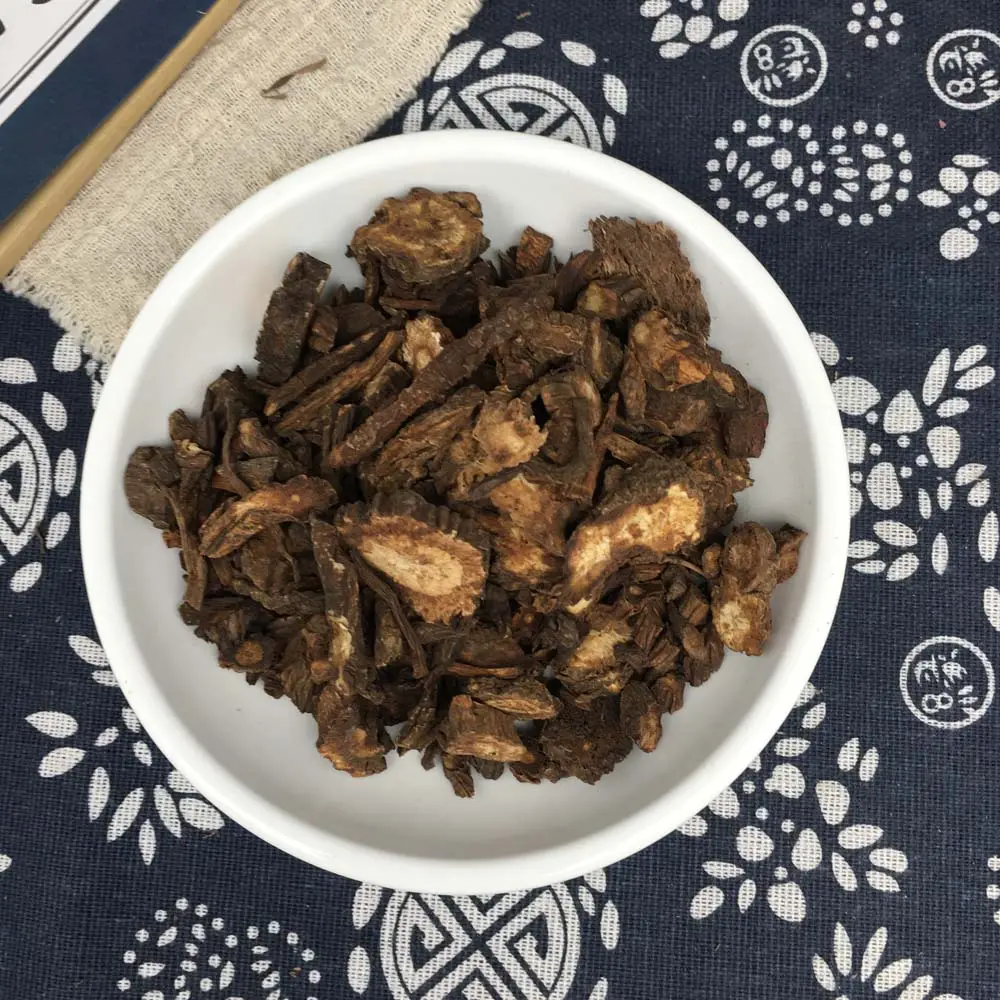

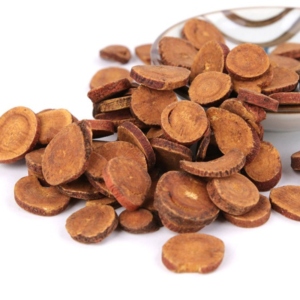
Đánh giá
Hiện tại không có đánh giá nào.